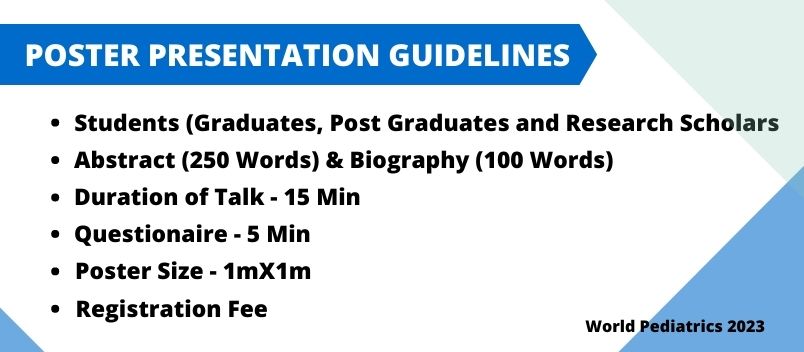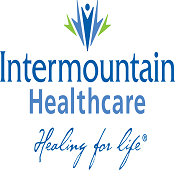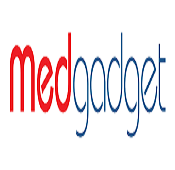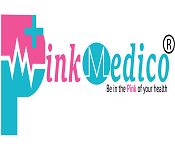Neuroscience-2022
About Conference
Looking for the best Neuroscience conference to feature to your 2022 calendar?
Euroscicon conference is proficient in organizing conferences, meetings, seminars and workshops with the ingenious and peerless speakers throughout the planet providing you and your organization with a broad range of networking opportunities to globalize your research and make your own identity.
With a grand success of Neuroscience 2021, we welcome you all to attend the “2nd International Conference on Neuroscience and Neurobiology” scheduled during October 24-25, 2022 at Florida, USA. The main theme of the conference is “Modern Revolution for the Future of Neuroscience and Neurobiology”. Join this intimate forum to create meaningful partnerships with 50+ Neuroscience experts. Translate key technological & mechanistic neuroscience advances into the clinic.
Our goal is to bring together worldwide distinguished academics in the field of Neuroscience and Neurobiology to exchange and share meaningful experiences of various treatment procedures for mental health, neurological disorders.
Target Audience
• Neurologists, Neurosurgeons, Neuroscientists, and Researchers
• Neurology Faculty and Students
• Doctors and Scientists
• Universities, Associations, and Societies
• Students and Research Scholars
• Business Delegates
• Product Manufacturer
• Psychiatrists and Psychologists
Neuroscience 2022 Mission: To provide the highest quality Neuroscience and Neurobiology education to learners and practitioners of all levels.
Neuroscience 2022 Vision: Through our inspiring international faculty, innovative programming, and vibrant interactions among all attendees, Neuroscience 2022 conference aspires to be the best Neuroscience and Neurobiology educational event in the world.
CONFERENCE OPPORTUNITIES:
· Exclusive Sessions and Panel discussions on latest innovations in Neuroscience
· Lectures by the active Investigators
· Keynote forums by Renowned Speakers
· Speaker Forum
· Poster Sessions on latest Innovation in all the relevant Areas
· Panel discussions and interactive sessions.
· Open Innovation Challenges
· Poster Sessions on every career stage
· Young Research Forum
· Post-Doctoral Career Development Session
· B2B Meetings
· Global Networking with 50+ Countries
· Novel techniques to benefit your research
· Best platform for Global business and Networking opportunities
· Excellent platform to showcase the latest products in neuroscience and affiliates
Neuroscience 2022 is Going Hybrid! This Conference will be a hybrid event (there will be both an in-person conference and a virtual conference) because some people may not be able to travel due to the pandemic or its economic impact. Making the congress more accessible helps us to achieve our mission to elaborate and advance the Neuroscience to expand the contribution to Neuroscience and Neurobiology community by reaching a much larger audience all over the region.
We strongly believe that Neuroscience 2022 will be a huge success and exceed our expectations extremely.
We look forward to your active participation and to welcoming you and your families with a fresh "Florida" in USA - the gateway to the world.
Tracks & Sessions
Track 1. Neuroscience and Neurology
Neuroscience is currently recognized as one of the most rapidly growing areas in cell biology. All human functions are influenced by neuroscience, but it also leads to a greater understanding of a wide variety of common conditions such as Down syndrome, autistic spectrum disorders (ASD), ADHD, addiction, schizophrenia, Parkinson’s disease, brain tumors, epilepsy, the effects of stroke, for example, language loss, immune system disorders. A better understanding of neurological factors will help in designing drugs and other methods to treat and avoid these and many other health conditions. Scientific advances have made it possible for neuroscientists to study the structure, functions, development, anomalies, and ways of altering the nervous system.
Since neurologists treat patients with disorders affecting the brain and nervous system, there are clear signs that you should be aware of before seeing a neurologist. Here are some typical auto symptoms to help you understand a neurologist's function and the difference between a neurologist and a neurosurgeon.
• Persistent dizziness
• Variations in sensations or emotions
• Difficulties with balance
• Headaches
• Emotional Confusion
• Muscle Fatigue
• Persistent sense of heaviness throughout the head
Track 2. Neurodegenerative Diseases and Stress
Neurodegenerative Diseases:
A type of disease within cells of the CNS ceases functioning or die. The cells of the brain are jointly linked and miscommunications in one region may disrupt further brain functions, explaining that brain disorders can consequence in widespread issues. Even though there are numerous illnesses and diseases that can influence the brain, the most complex of these diseases are called neurodegenerative diseases. These diseases can influence an individual’s movement, speech, memory, intelligence, and much more. As neurodegenerative diseases are so complex, the root of various diseases remains a question. Neurodegenerative disorders generally get adverse over time and have no heal. They may be genetic or be caused by a malignancy or stroke. They also occur in persons who consume huge quantity of alcohol or are exposed to certain viruses or toxins.
· Alzheimer’s disease and other dementias
· Parkinson’s disease and PD-related disorders
· Prion disease
· Motor neuron diseases
· Huntington’s disease
· Spin cerebellar ataxia
· Spinal muscular atrophy
The body’s reaction to intellectual, physical or psychological pressure. Stress leads to chemical alteration in the body that will increase blood glucose volume, heart rate and blood pressure. It may further lead to feelings of anger, anxiety, frustration or depression. Stress may be originated by usual life activities or by an incident, such as injury or illness. Long-term stress or high levels of stress may lead to mental and physical health problems.
· Acute stress
· Episodic acute stress
· Chronic stress
Track 3. Brain Structure and Function
The brain has three main parts: the cerebrum, cerebellum and brainstem. Cerebrum is the biggest portion of the brain and contains of left and right hemispheres. It executes major responsibilities like interpreting touch, vision and hearing, as well as emotions, fine control of movement, speech, reasoning and learning.
Function:
· Attention and concentration
· Self-monitoring
· Organization
· Motor planning and initiation
· Awareness of abilities and limitations
· Personality
· Mental flexibility
· Inhibition of behavior
Track 4. Geriatric Psychiatry and Neurology
Geriatric Psychiatry:
Geriatric psychiatry, also called as neuropsychiatry, psychogeriatric or psychiatry of old age is a subspecialty of psychiatry dealing with the study, prevention, and treatment of mental disorders in humans with old age.
Geriatric neurology is the discipline of medicine which studies neurologic disorders in aged people.
Track 5. Neuroimmunology
Neuroimmunology as a distinct field has its origins in the fields of neurology, psychiatry and immunology. Although neuroimmunologists initially concentrated on classical neuroinflammatory disorders such as multiple sclerosis and infections, there is strong evidence to indicate that the immune response leads to disorders of hereditary white matter, epilepsy, neurodegenerative diseases, neuropsychiatric disorders, peripheral nervous system and neuro-oncological conditions, as well as ageing. Our understanding of how the immune system affects the nervous system during development and aging and how such responses lead to disease as well as regeneration and repair has been greatly assisted by technological advances.
Track 6. Neurosurgery and Spine
Neurosurgery, or neurological surgery, is the medical specialty involved with the prevention, diagnosis, surgical treatment, and rehabilitation of disorders which affect any part of the nervous system including the brain, spinal cord, central and peripheral nervous system, and cerebrovascular system. Back pain can sometimes produce neurological symptoms such as numbness, muscle weakness, and loss of bowel and bladder control due to dysfunction at the nerve root.
Spine surgery procedures:
· Laminectomy
· Micro discectomy
· Traditional Lumbar Fusion
Track 7. Human Brain Mapping
Brain mapping is the study of the anatomy and function of the brain and spinal cord through the use of imaging (including intra-operative, microscopic, endoscopic and multi-modality imaging), immunohistochemistry, molecular & opt genetics, stem cell and cellular biology It is a set of neuroscience techniques predicated on the mapping of (biological) quantities or properties onto spatial representations of the (human or non-human) brain resulting in maps.
· Regional cerebral blood flow (rCBF)
· Regional metabolic rate of glucose (rCMRglc)
· Near infrared spectroscopy (NIRS)
· Electroencephalography (EEG)
· Magneto encephalography (MEG)
Track 8. Child and Adolescent Psychiatry
Child & adolescent psychiatry specialize in the diagnosis, treatment and prevention of mental disorders in children also as adult. Child and adolescent psychiatry has the multidisciplinary channel disorder of emotion and behavior that have their origins in neurophysiology, genetics, and in environmental factors that affect the child's growth and development. Commonest childhood mental disorders are anxiety disorders, depression, and a spotlight deficit hyperactivity disorder (ADHD). Normally the youngsters with mental disturbance will have lower achievement within the education and great involvement within the criminal justice system.
Various treatments are available for treating child mental disorder/mental illness like several effective medications, educational or occupational interventions, also as specific sorts of psychotherapy, during a year almost one- fourth of youngsters and teenagers experience some sort of mental disorders.
Track 9. Psychology and Mental Health
Neuropsychology combines elements of neurology and psychology. Neuropsychologists study the effects that psychological conditions have on the nervous system—including the brain and spine—and they may also research ways in which changing brain chemistry due to injury, hormones, or environmental factors can affect mental health. Neuropsychology is primarily concerned with assessing conditions that affect brain health, such as Alzheimer's and traumatic brain injury, and with evaluating how neurological functioning can affect mental health. Clinical neuropsychologists conduct psychometric assessments to measure neurological health. Neuropsychology boasts a strong experimental tradition. Many neuropsychologists use a trial-and-error approach, making small alterations to test their effectiveness.
Track 10. Pediatric Neurology
Just as pediatric neurology evolved as an identified specialty because the volume and complexity of knowledge became an excessive amount of for the overall pediatrician or the adult neurologist to master, the discipline has now continued to evolve into numerous subspecialties, like epilepsy, neuromuscular disease, stroke, malformations, neonatal neurology, metabolic diseases, etc., that the overall pediatric neurologist not can reasonably possess in-depth expertise altogether areas, particularly in handling complex cases. Subspecialty expertise thus is provided to some trainees through fellowship programmers following a general pediatric neurology residency and lots of those fellowships include training in research.
Track 11. Neuropharmacology and Neuroendocrinology
Neuroendocrine components activated by stressors include the increased secretion of epinephrine and norepinephrine from the sympathetic system nervous and medulla, the discharge of corticotrophin-releasing factor (CRF) and vasopressin from parvicellular neurons into the portal circulation, and seconds later, the secretion of pituitary adrenocorticotropic (ACTH), resulting in secretion of glucocorticoids by the Adrenal . Corticotrophin-releasing factor coordinates the endocrine, autonomic, behavioral and immune responses to worry and also acts as a neurotransmitter or neuromodulator within the amygdala, dorsal raphe nucleus, hippocampus and locus cerulean, to integrate brain multi-system responses to worry.
Track 12. Brain and Neurological Disorders
Any disorder happen at the body system nervous is named as Neurological Disorders. Brain, medulla spinals or other nerves like structural, biochemical or electrical abnormalities may sometimes lead as symptoms. Symptoms of nervous disorder could also be sensation loss, poor coordination, muscle weakness, paralysis, confusion, pain, and modified consciousness levels. Biochemical modifications and sometimes physical injury to the brain, medulla spinals, or nerves are often caused by the nervous disorder. But in some cases, it's impossible to work out the basis cause by seeing only effects.
Track 13. Neurotherapeutics, Diagnostics and Case studies
Researchers and physicians have used a spread of imaging techniques and chemical to diagnosis a nervous disorder. After diagnosis, many treatment techniques, including medicines (topical, oral, and intravenous), device-based therapies (such as profound brain stimulation), surgery (such as tumor removal processes), physiotherapy, and rehabilitation, show promising results for effective nervous disorder treatment. The most requirements for providing extensive look after a spectrum of neuropsychological disorders and conditions is clinical skills, cutting-edge research and personalized attention. This conference may be a best platform to extend extra profound experiences into the accepted procedures in clinical trials, and breakthrough the difficulties in Stroke and Neurology and taking a glimpse at the foremost recent preclinical and clinical studies.
Track 14. Neurological Complications of COVID_19
The COVID-19 pandemic, caused by extreme coronavirus 2 (SARS-CoV-2) acute respiratory syndromes, is of a magnitude not seen since the influenza pandemic of 1918; while the prevalent clinical diagnosis is with respiratory disease, there's growing awareness of neurological manifestations. Supported knowledge of other coronaviruses, especially people who caused severe acute respiratory syndrome and epidemics of the center East respiratory syndrome, cases of CNS and peripheral disease of the system nervous caused by SARS-CoV-2 should be assumed to be uncommon. Neuroscience 2021 provides a platform for scientists, researchers, young scholars to unveil the neurological complication of COVID-19
Specific Neurological Complications
· Cerebrovascular Complications. ...
· Subarachnoid Hemorrhage. ...
· Massive Cerebral Hemorrhage. ...
· Encephalopathy. ...
· Acute Hemorrhagic Necrotizing Encephalopathy. ...
· Encephalitis. ...
· Anti-N-Methyl-D-Aspartate Receptor (NMDAR) Encephalitis. ...
· Meningitis/Encephalitis
Market Analysis
It is our pleasure to welcome you to the Neuroscience 2022 conference to be held Florida, USA from October 24-25, 2022.
The organizing committee is gearing up for an exciting and informative program on a variety of topics, poster presentations and various programs for participants from all over the world. Unsurpassed substantiation cure for Neurocognitive disorders clearly shows that the close association of families and careers in the care of their loved ones is key to improving early revealing of Vascular Dementia, renewal to a healthy weight and sustaining long term wellbeing.
This conference will increase knowledge, provide support, assist learning and allow to seek out applicable services and to develop the best environment to support recovery from these complex and devastating diseases.
Market Analysis
Neuroscience is the scientific study of the nervous system. It is a multidisciplinary branch of biology,that combines physiology, anatomy, molecular biology, developmental biology, cytology, mathematical modeling and psychology to understand the fundamental and emergent properties of neurons and neural circuits.
Neurocognitive disorders are characterized by decline from an attained level of cognitive functioning mainly when physical changes can be seen to have occurred in brain, such as after neurological and mental illness, drug use, or brain injury. Neurocognitive disorders (NCDs) are a category of conditions that include dementia, amnesia, Alzheimer’s disease, Mild cognitive impairment, Attention deficit hyperactive disorder, Hallucinogen persisting perception disorder, cerebellar cognitive affective syndrome, post-operative cognitive dysfunction, HIV associated neurocognitive disorder.
Alzheimer’s disease is the most common form of dementia accounting for 50% to 70% of all cases. It mostly occurs in the older people who are 65 years and above. Moreover, growing awareness level regarding its symptoms, such as partial dementia, is projected to boost the demand. Currently, there are an estimated 4 million individuals with dementia in the USA with more than 100 000 deaths annually. The global market for Alzheimer’s disease reached $10.2 billion in 2012. The market is expected to decrease to $9.5 billion in 2017 for a CAGR of -1.5%.
The Alzheimer's Association funds independent investigators worldwide, they have awarded over $335 million to more than 2,250 projects. The global cost of Alzheimer’s and dementia is estimated to be $605 billion, which is equivalent to 1% of the entire world’s gross domestic product.
Aggregate Cost of Care by Payer for Americans Age 65 and Older with Alzheimer‘s Disease and Other Dementias: Medicare $113 Billion, Medicaid $41 Billion, Out of pocket $44 Billion, Other $29 Billion.
Dementia is widely considered the second most common cause of dementia after Alzheimer's disease, accounting for 10 percent of cases. Many experts believe that vascular dementia remains underdiagnosed like Alzheimer's disease even though it's recognized as common. The global market for treatments for syndromes of dementia and movement disorders was valued at 10.5 billion in 2011 and should reach $11.1 billion in 2012. Total market value is expected to reach $16.7 billion in 2017 after increasing at a five-year compound annual growth rate (CAGR) of 8.5%.
Amnestic Disorders are a group of disorders that involve loss of memories previously established, loss of the ability to create new memories, or loss of the ability to learn new information.1 In general, Amnestic Disorders are caused by structural or chemical damage to parts of the brain.
People who suffer from Amnestic Disorders usually experience difficulty recalling events that happened in the past or facts they have learned prior to diagnosis. This type of amnesia is known as retrograde amnesia. Some people may also experience symptoms of anterograde amnesia, which involves the inability to learn new facts or retain new memories.
The global amnesia therapeutics market was worth $112m in 2011, and is forecast to grow at a Compound Annual Growth Rate (CAGR) of 3.5% to reach $147m by 2019. This growth is primarily attributed to the increase in the general population and diagnosis rate across the seven major markets (the US, the UK, Japan, Germany, Spain, Italy and France).
Why Sydney
Sydney, the capital of New South Wales, Australia is known as the Harbour City. It's the largest, city with a population of around 4 million. It has an enviable reputation as one of the worlds most beautiful and lies amid a seductive intermingling of land and sea.
Sydney is a major global city and one of the most important cities for finance in the Asia-Pacific. Sydney is built around a huge harbor and hosts many tourist attractions as well as a number of beaches, bays and a couple of national parks.
Brimming with history, nature, culture, art, fashion, cuisine, design, Sydney is set next to miles of ocean coastline and sandy surf beaches. Long-term immigration has led to the city’s reputation as one of the most culturally and ethnically diverse cities in Australia and the world. The city is also home to the Sydney Opera House and the Sydney Harbour Bridge, two of the most iconic structures on this planet. Sydney's 4,757,083 residents sprawl over an area of more than 12,350km².
Companies Associated with Neurology in Australia:
The Janssen Pharmaceutical Companies of Johnson & Johnson
Bristol-Myers Squibb
Lundbeck
Otsuka Pharmaceutical Companies (U.S.)
Sanofi
Pfizer
AstraZeneca
NHS
Novartis
Eli Lilly and Company
Major Neurological Associations around the Globe:
Neuropathy Association
The brain & behavior research foundation
Alzheimer's Association
American Academy of Neurology
European Neurological Societies
World Federation of Neurology
Spanish Society of Neurology
Major Neurological Associations in Italy
Hilarescere Foundation in Italy
Italian MS society in Italy
Southern Clinical Neurological Society
ESNR European Society of Neuroradiology
Vision sciences society
Around 500 top universities globally working in the field of Neuroscience:
Dalhousie University
Leiden University- Neither land
Temple University USA
University Oklahoma
Boston Coll USA
Florida International University
University California – Davis
University Sheffield
University Manchester
University of Nottingham
Cardiff University
University of Toronto – Canada
Hospitals Associated with Neuroscience Research
All around the globe there are 6000 hospitals working on Neurology:
Some of them among them are:
Johns Hopkins Hospital
World Brain Center Hospital
Duke University Hospital
Edward Hospital
Munson Medical Center






















